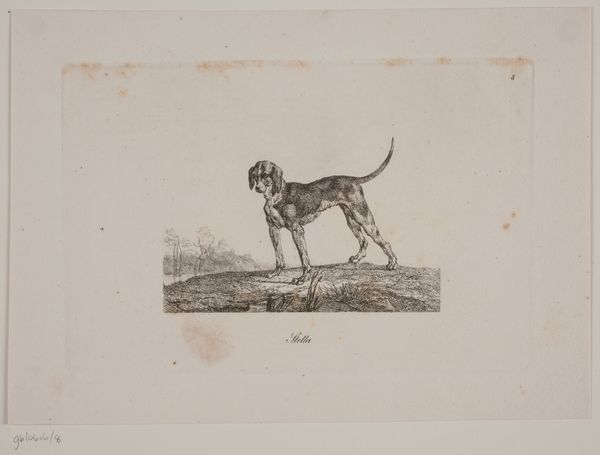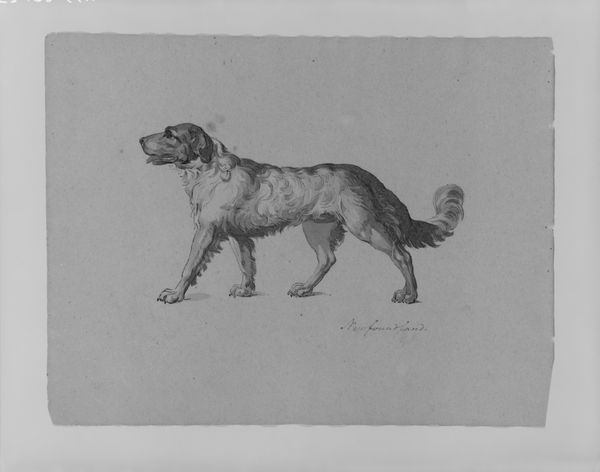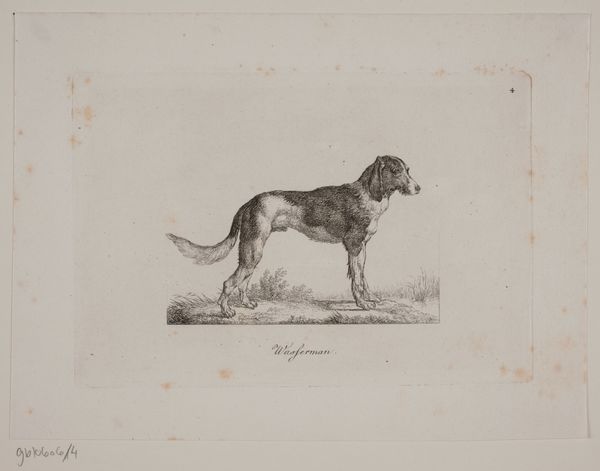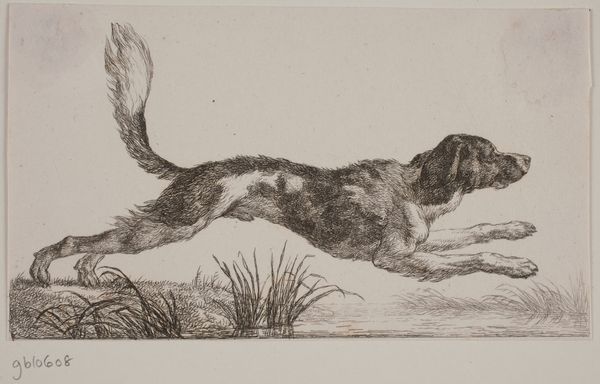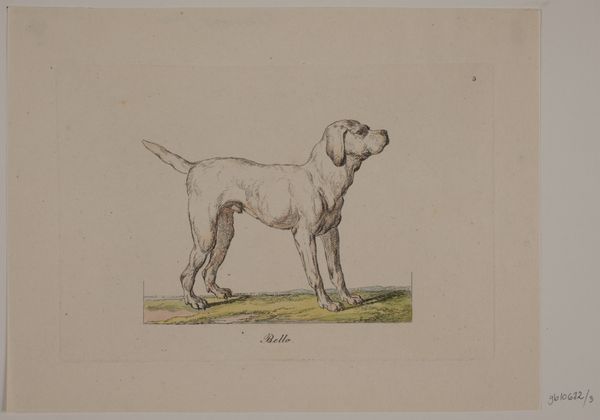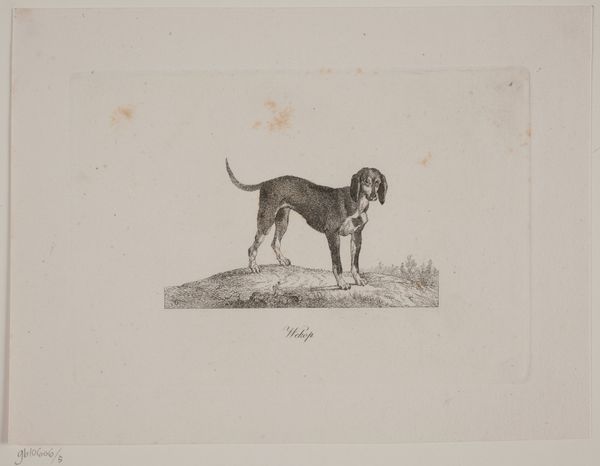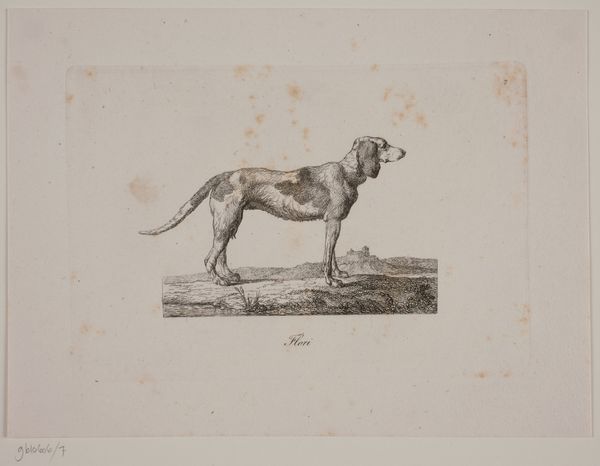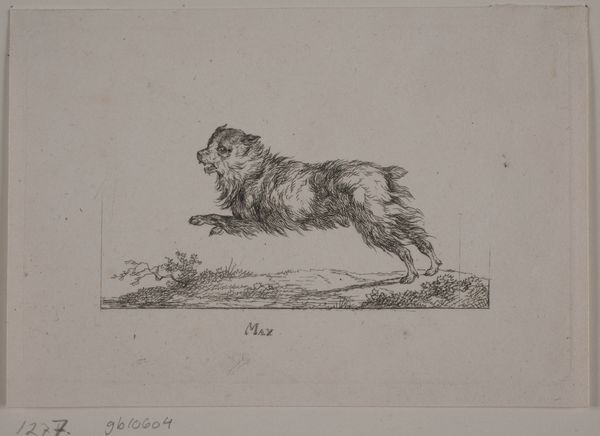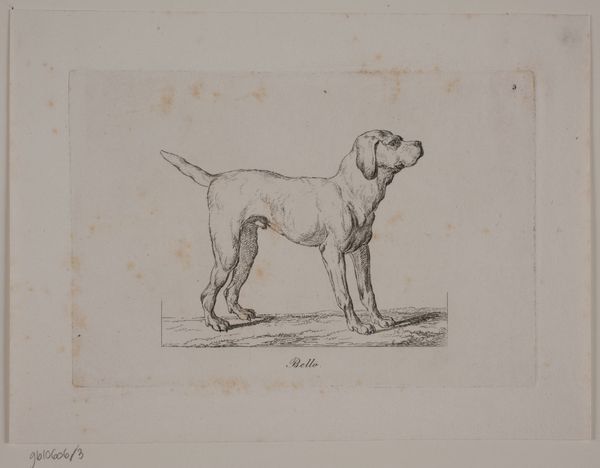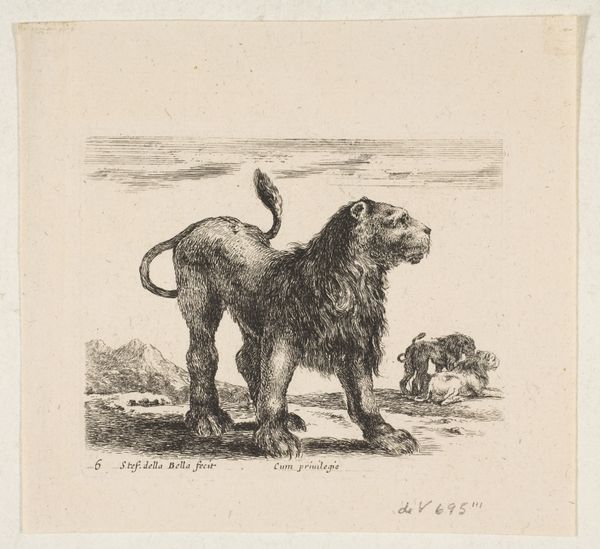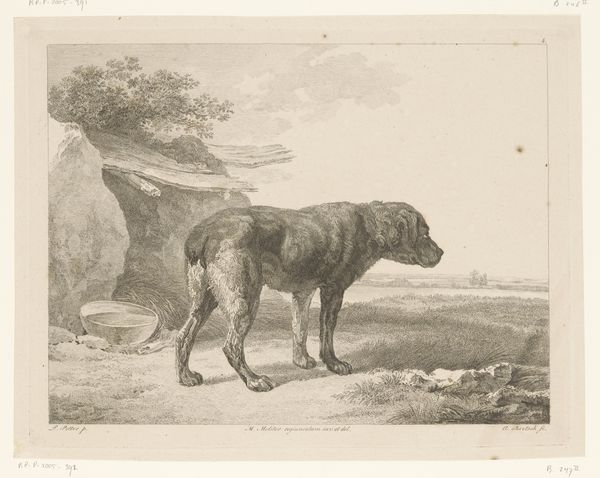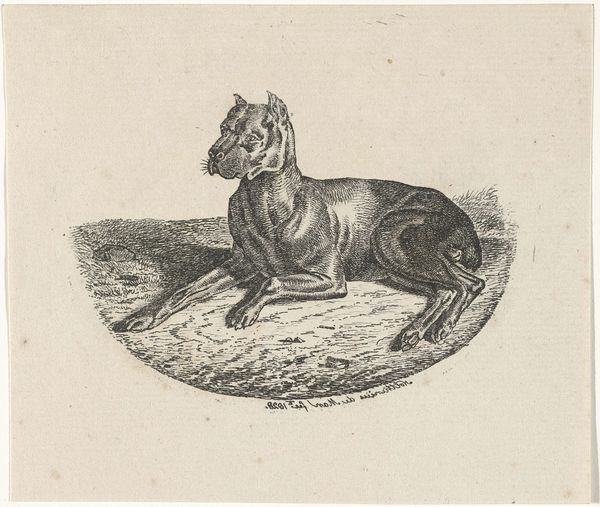
drawing, print, engraving
#
drawing
# print
#
landscape
#
figuration
#
engraving
#
realism
Dimensions: 135 mm (height) x 182 mm (width) (plademaal)
Curator: This engraving, entitled "En hund"—which translates to "A Dog"—is part of the collection here at the SMK, made sometime between 1804 and 1846 by the artist Christian Holm. What do you make of it? Editor: There's a dynamic, almost playful energy in the etching, achieved with contrasting line weights to describe the texture of the dog’s coat as it splashes through the water. Curator: I find it interesting that dogs started emerging more and more in fine arts in the beginning of the 19th century. They used to be simple companions and hunting assets, but started to signify something about status and class, in a way. Editor: Yes, but let’s not overlook the technical aspects, here. The detail in rendering of the water—that is a pretty conventional landscape format, as is the placement of the animal on a horizontal axis, yes? The dog strides from the shore in the left, emerging in full light to stride into the right. Classic! Curator: True, Holm’s strategic use of realism can definitely be tied to similar conventions in landscape and figuration painting of that era, but you see, there's also a clear intention of making the image relatable and desirable for middle-class audiences. Dogs began appearing frequently on interior paintings to illustrate domestic prosperity. This would make it very commercially viable as an engraving at the time, you see? Editor: Of course! Although its charm draws me more towards its skillful portrayal of motion, rather than its social underpinnings. The tail, the stance... Curator: Indeed! The beauty is that it works on multiple levels—an artwork of technical and artful appeal that serves as an historical and cultural artifact. It’s fascinating to consider how something so seemingly straightforward can offer us insights into both art history and the fabric of everyday life. Editor: Agreed. It’s easy to get lost in the granular details while also appreciating the cultural context, right? A testament to art's multifaceted charm!
Comments
No comments
Be the first to comment and join the conversation on the ultimate creative platform.
